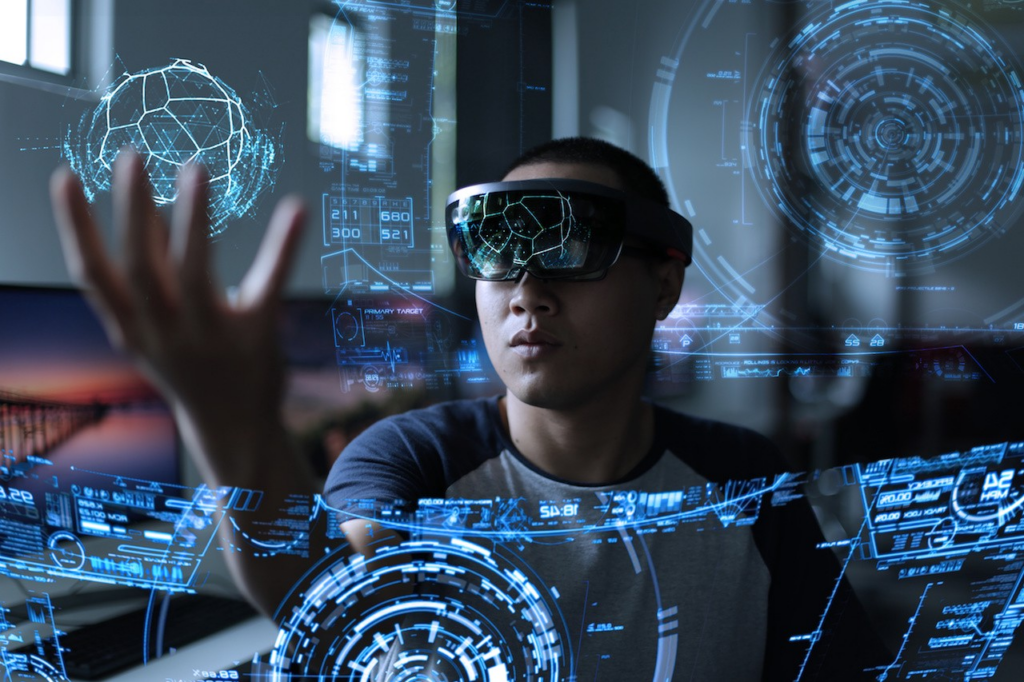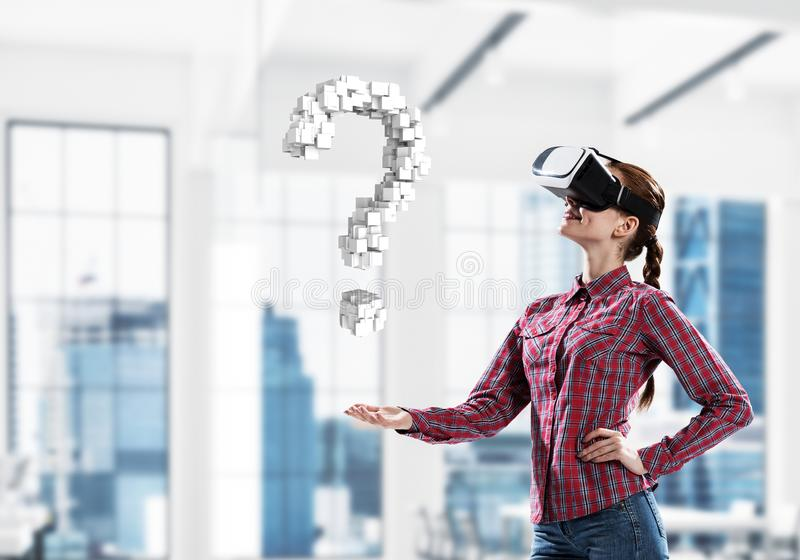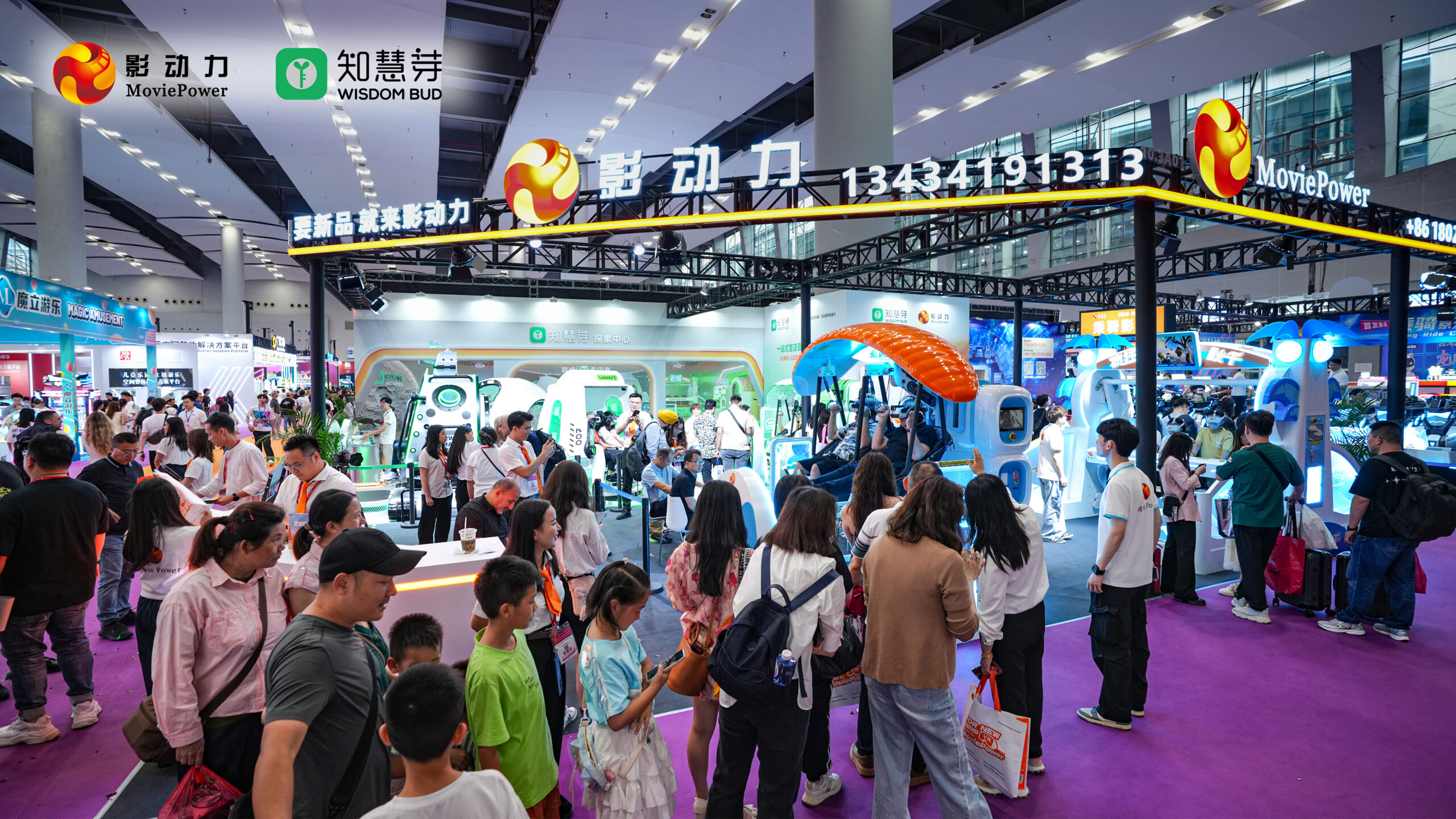
Source: https://pixabay.com/
Today, virtual reality is more widely available than ever. But even six years after consumer VR first hit the market, there are still a lot of unanswered questions for novices. There is a lot of false (or even purposefully misleading) information floating around because it is still a niche technology. To clear your puzzle about VR, we are providing you with essential information regarding virtual reality in our VR guide.
What is VR?

Source: https://pixabay.com/
Abbreviated and commonly known as VR, virtual reality is using pose tracking and 3D near-eye displays to provide users with an immersive sense of a virtual world. It has applications in business, education (such as medical or military training), and entertainment (especially video games). Aside from virtual reality, other different forms of technology include augmented reality and mixed reality, sometimes known as extended reality or XR, however, definitions are still evolving as the field develops.
To provide lifelike visuals, sounds, and other sensations that mimic a user’s physical presence in a virtual world, current standard virtual reality systems either use virtual reality headsets or multi-projection environments. A user can see around the virtual world, move around in it, and interact with virtual features or objects while utilizing virtual reality technology. The impression can also be produced by specially built rooms with numerous large screens, although it is most frequently produced by VR headsets that have a head-mounted display with a small screen in front of the eyes. Virtual reality normally includes audio and visual feedback, but haptic technology may also enable additional types of sensory and force feedback.
The Invention and Growth of VR Tech

Source: https://www.pinterest.com.au/
Although virtual reality (VR) may appear to some as a brand-new, cutting-edge technology, it has existed for over 60 years! The history of virtual reality and its contributors have paved the ground for the spectacular pleasure we enjoy today.
In 1957, in order to provide an immersive experience, Morton Heilig created the Sensorama. This arcade-style reality simulator required the spectator to sit in front of it with their head between two panels and watch 3D-style graphics while being exposed to specific sounds and smells. The Sensorama has been widely recognized as the first VR gadget, despite the fact that it is not the actual virtual reality as we know it today. The numerous varieties of virtual reality headsets made available to the public, ranging from the EyePhone to the Samsung Gear VR, the most well-known headgear, show how VR has advanced even in more recent times.
Where Can We Expect to See VR Tech

Source: https://www.istockphoto.com/
Gaming & Entertainment
With the application of virtual reality to gaming and entertainment, people of all ages have found great relaxation and delight. With a variety of headgear, dynamic content can be developed and delivered, engaging gamers with new and improved interactions. Here are some of the well-known applications to gaming and entertainment:
First-Person Shooter VR Games
One of the most well-liked genres on the VR platform is first-person shooting games. Gaming lovers’ desire to play for extended periods of time can be boosted by experiencing the proper presence on the battlefield through their visual and auditory senses.
Racing VR Games:
This genre of games is full of cutting-edge and flawless graphics that allow the players to anticipate tactile pleasures like a car’s interior.
Now in many shopping complexes and malls, visitors are likely to spot some VR simulators that offer VR racing games such as VR motorbikes and roller coaster simulators, the most-deployed VR equipment. Given the unparalleled experience of VR and the increased accessibility of VR suppliers, many arcades have also upgraded their hardware to VR simulators.
Horror Games:
Horror video games have a new edge with VR. Realistic graphics have made the gameplay more frightful and fascinating. This genre now includes a first-person viewpoint in addition to object-based audio, 360-degree views, and haptic input thanks to high-resolution VR headsets.
New Way of Shopping
Consumers and retailers have already benefited from virtual reality in retail. Consumer expectations at brick-and-mortar stores were irrevocably transformed by online shopping and now virtual reality is redefining online shopping and reshaping the retail landscape. Virtual reality can promote greater brand recognition and engagement in a number of different ways.
First of all, virtual reality enables your consumers to browse your shop from the comfort of their homes, sample your products, and try on clothes, makeup, etc. Users can spend more time browsing and connecting with your brand because they don’t have to leave their current location or relocate physically. Next, innovative businesses may also leverage VR to produce original content and stage virtual live events that tell their brand’s story, provide customers with exclusive offers, and do so much more. A VR environment gives your company another opportunity to interact with customers.
Communication
The way we communicate stories is changing with the advent of VR, 360-degree immersive video, and photography. What does this mean for future communication, then? Instead of using 2D Excel sheets, pie charts, and visual charts, people can present data using VR as a multi-dimensional model on a 3D medium. People can walk around the environment that data creates. Consider the Virtual Reality Network Visualizer developed by the Institute for Manufacturing at the University of Cambridge. Utilizing a VR headset and controls, the VR tool enables users to evaluate the supply chain network of a firm. The capabilities of VR go beyond education for the sake of personal enrichment.
Setting up situations through VR is regularly cited as producing greater memory than video or print training, from controlling the holiday rush to cleaning up passages. Additionally, Google’s Daydream VR team is now investigating several options for a virtual coffee maker to enable baristas to understand the specifics of their duties without getting their hands wet.
School System
With more schools embracing new technologies, virtual reality is exploding in the education industry. Virtual reality enables pupils to travel the world without ever leaving the classroom. Imagine allowing pupils to tour the Giza Pyramids while seated at their desks. This is made possible by virtual reality in education. The most popular application of 360VR, a form of VR, is in education. Real-world places are filmed using specialized cameras and equipment for this form of VR. After that, the footage is returned to the studio to be turned into VR content. In what are referred to as immersive classrooms, the VR content can subsequently be seen on VR headsets or projected onto walls.
Military
Immersive rooms are being used by several US military locations to educate its troops. For example, the Hawaii-based Schofield Barracks’ Virtual Squad Training System (VSTS) employs wireless weapon controllers, a full-body monitoring system, and head-mounted displays with motion trackers to simulate the size, weight, and shape of actual military weapons. Participants learn interdependence skills and the impact they can have on their fellow soldiers in such virtual reality platforms. Another military VR application lies in flight training. Pilot training requires the use of military flight simulators. Pilots in training can be securely exposed to and prepared for difficult real-world events with the use of high-fidelity simulations. For complete pilot training, you might overlay a flight simulator with a virtual environment that represents a real battlefield (TechViz Fusion can be used for this kind of virtual reality simulation). To accurately recreate pilot training, all of the user’s senses will be aroused.
Why VR is the Future?

Source: https://medium.com/
Here are three reasons why virtual reality will be the future and how, if not already, it will affect our daily life in the near future.
1. Better and faster employee preparation
There aren’t many strategies to improve employee performance and accelerate learning. People often gain knowledge through experience, although it could be years before a worker is exposed to a particular workplace circumstance. And by that time, any soft skills instruction they may have received has either been completely forgotten or filed away in the back of their minds. This is when immersive learning tools like virtual reality may really pay off.
When employees are placed in a digital environment, they may instantly put their newly acquired abilities to use and practice them until they become second nature. Employers also profit from simulations since they lower risk and save money. Consider this: managing and conducting training with VR is far more time-efficient. Employers can also anticipate responses in advance and tailor training to avoid any hazards to workers by viewing and monitoring employees and their reactions in VR environments. This significantly lowers risk and increases the possibility of novel solutions because concepts can be quickly evaluated in virtual settings.
2. A Different Way To Socialize And Meet People
Do you remember when it was frowned upon to do online dating? Nowadays, it seems that using dating apps like Bumble or social media sites like Facebook is the only method to meet a romantic partner or acquaintance.
Our options for who and where we can meet have expanded thanks to the internet. A person can instantaneously connect up with someone in their neighborhood or have a conversation with someone on a foreign continent with a few clicks and swipes. Consider virtual reality as the next stage in interacting with people you don’t know or hanging out with pals. The most well-known VR-based social platforms at the moment are VR Chat and Rec Room, and more are constantly being created. It’s doubtful that more of our social contacts will take place in the virtual world, even while VR won’t necessarily replace the meaningful ways we engage with others in the physical world – especially as the technology gets more widely used.
3. Boosting Scientific Development
VR brings value across a variety of businesses, but one area where it has a particularly significant impact is how it’s boosting science. For instance, did you know that VR enables researchers, doctors, and scientists to virtually collaborate on drug development with people who aren’t even in the same room? Experts may now collaborate with colleagues around the globe to quickly find solutions to urgent issues. Then there are forward-thinking institutions like NASA that are adopting VR to aid astronaut training.
Actually, they recently announced the “NASA MarsXR Challenge,” a $70,000 reward contest with crowdsourcing platform HeroX, in order to attract developers to work on a brand-new Virtual Reality environment that will aid in preparing for Martian adventures. We have only begun to scratch the surface of how VR will change the world. However, it is obvious that as time passes, VR innovation will not only increase but also eventually become a commonplace aspect of our daily life. In fact, Marty McFly might believe that we are the ones who live in a futuristic society.
When Will We See Another Leap in VR Tech?

Source: https://www.dreamstime.com/
Given advancements in technologies like smartphones and Internet technologies and as gadgets and technologies become more accessible and less expensive, the majority of studies indicate that the potential of VR technology will be witnessed soon – in the range of 5 to 10 years. Although there are obstacles to be overcome before VR can realize its full potential, we have seen that the advantages it offers have demonstrated its potential in the future.
Key Takeaway

Source: https://cn.depositphotos.com/
Although augmented and virtual reality will confront some difficulties and limitations, the advantages that these technologies could offer for various aspects of our life greatly exceed their more “bad” aspects. Businesses that recognize this potential and invest in developing immersive solutions will have a significant impact on corporate performance, process optimization, and customer experience.


英文.jpg)

